
Reading comprehension is a LOT about language and visualization! This is especially true for the right brain learner, who learns best when he or she sees and experiences information.
So much is being discussed about how children learn to read or being taught HOW to read. These “reading wars” have been going on forever! No doubt, they will continue for a long time to come. The truth is…THERE IS NO ONE WAY TO TEACH READING!!— Yes, I said it!
Every child is different. They come to school from varying backgrounds and experiences, and with those experiences come the words or language they are comfortable using. We need to meet kids where they are at- NOT where others think they need to be.
YES, children need to understand, know, use and be able to manipulate or change around sounds that are letters (which are symbols for sounds, but most kids don’t make that connection right away.) Not all children will learn to do that at the same time or at the same rate.
Multiple factors are needed for children to be successful to learn to read and even more to improve reading comprehension. Just like the cartoon suggests, we view our students from multiple perspectives, and rarely look at the whole child and what that child is good at or comfortable doing.
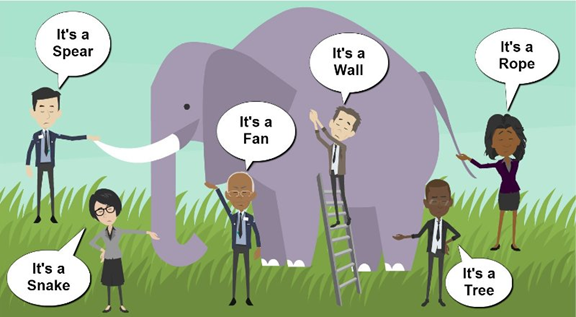
The right brain learner often has a longer list of strengths and challenges than others do. (picture source www.priyankadutta.com)
I have read thousands of reports over the years. To most parents, these reports can be overwhelming. Lots of words and pages of what they assessed and what the child is not good at. Most psychology professionals will report on a child’s strengths but that often gets lost when so much is suggested as to what should be addressed to help the child succeed. One of the most common findings is that a child is “weak in phonemic awareness” or “decoding skills”. It seems like other findings and suggestions – which admittedly are many- are overshadowed by the push to believe that if those skills are worked on exclusively, things will get better. Parents are bombarded by the notion that they need to have their kids spend hundreds of hours practicing and remembering rules of when certain sounds are made and that just by being able to sound out words, they will be able to comprehend what those words mean.
Many parents believe, The Science of Reading premise is that the Simple Formula of Reading is:
Decoding X Reading Fluency = Reading Comprehension
For many of us–and the thousands of students I have worked with, this just is NOT the case!
I, for one, need to have an understanding of what a word means… a picture in my head of an understanding of the word, within a context. In short, I need an understanding of LANGUAGE!
So many of our students can actually learn to decode. In isolation, they are able to tell me the individual sounds, and can put them together. What they struggle with is transferring or generalizing that skill when reading!
Another one of my favorite quotes is:
“Scientists have determined that it takes approximately 400 repetitions to create a new synapse in the brain- unless it is done with play, in which case, it takes between 10 and 20 repetitions!” Dr Karyn Purvis, a child development expert.
At 3D Learner, I have coined the term Flearning ® — where our goal is to have our students learn from AHA moment to AHA moment, by discovering the patterns. For the right brain learner, it is incredibly important to leverage their visualization skills and to make learning Fun.
Language, and the use of words come from play and discovery. As parents, it is vital that we create an environment where this is possible. It is also vital that we look at the whole child and sort out what things they CAN do and encourage that. If we only focus on what a child CANNOT do, they lose so much, self-esteem suffers, and anxiety takes over!
Understanding where the Science of Reading fits in the BIG PICTURE of what your child needs will lead to a way better outcome for success for your child. Not every child learns exactly the same way. What we do know is that the most effective way for kids to succeed in reading is for them to make connections: with their teacher, with words and with their experiences. If we listen and observe, they will show us what they need.
At 3D Learner, we provide an Integrated, Engaging, Fun and Effective way to improve reading fluency and reading comprehension.
If you would like to discuss how you can put your child on their Pathway to Reading Fluency and Reading Comprehension Success call us at 561-361-7495 or click here to schedule a no cost Pathway to Reading Fluency and Reading Comprehension Success Conversation.
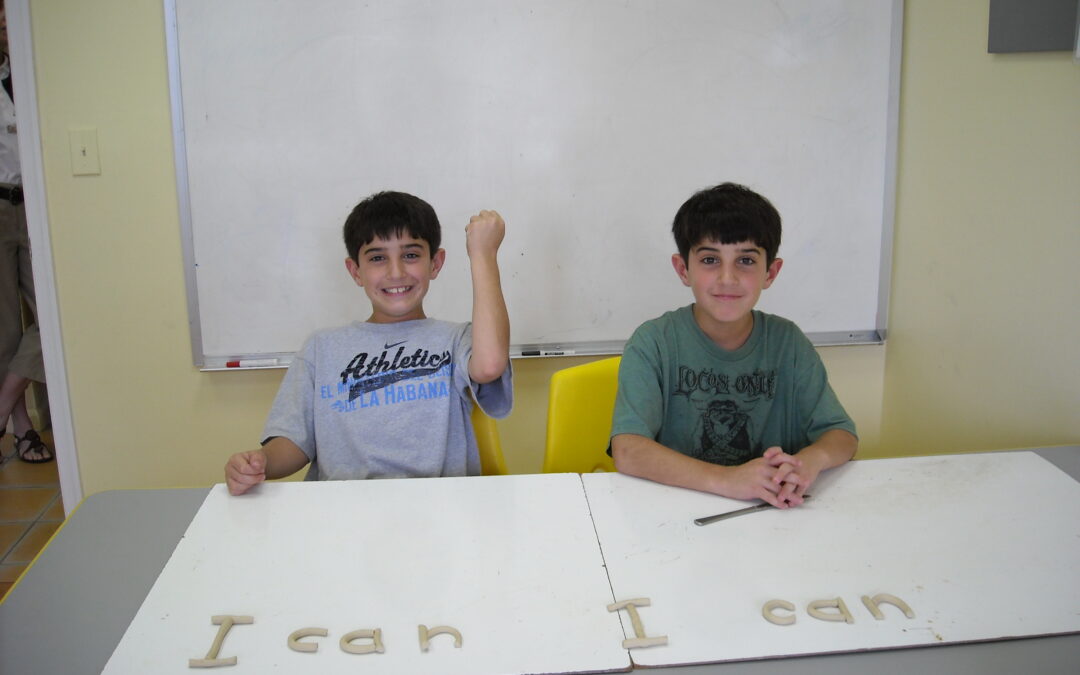
(Often Students Have Been Diagnosed with Dyslexia, ADHD and/or Executive Function Challenges)
3D Learner has helped hundreds of students from 40 different states and 12 foreign countries. These students often were identified with dyslexia, ADHD or executive function issues. Their parents were delighted to find a strength-based program that could teach to their child’s strengths, engage their child and result in significant gains in months.
Within our practice, we call these students a 3D Learner, that is they think in pictures and often in 3 dimensions. From a diagnostic standpoint, one might call them neurodivergent, right brain or kinesthetic learners.
7 Keys to the Success of our 3D Learner Students From Outside Our Area
- Very few programs focus on the strengths of these students. Note, while we might use more common terms like neurodivergent, right brain or kinesthetic learners in describing these kids, when they are here we use the term GOLD Student — Gifted Operating with a Learning Difference. Their gift is they learn differently and can do far better with a hands-on visual approach
- We assess for and address dyslexia, attention and executive function challenges
- We also assess for and address visual processing issues that are often present. These students often have excellent peripheral vision, but their eyes do not converge when reading
- We have 26 years of successes with these students and an excellent team. Note, the 3D Learner Program was developed by Mira Halpert for our daughter. Mira is an experienced educator, a mom who cares and a professional who is committed to helping our students succeed
- The parents really like the concept of an intensive effort that will help their child and them with follow up support.
- We help parents get the help their child needs at school
- The quality of the parents who show up. The students we see are often much smarter than present results would indicate, the parents want their child to succeed and together, we make it happen.
If you suspect this might be your child, we recommend downloading our “Is my child a neurodivergent, right brain or kinesthetic learner screening tool. Then sit down with your child and ask them the questions. Their answers may surprise you.
3D Learner — Intensive Live Training With On-Going Support Via Zoom
Note, initially we did the program in 5 days, with ongoing support. The results were very good.
Then, for clients east of the Mississippi, we started offering three days one week and two days 4 to 6 weeks later, with ongoing support. This resulted in even greater gains.
Now we offer both options, with ongoing support via zoom.
The intensive training with ongoing support works quite well, because:
- Intensive and integrated training works well for these students
- The parents are immersed in the process, too
- Family bonding is fun to watch and very helpful
- The on-gong support maximizes the benefits of the effort
How this works.
Parents often realize they have a child who is a lot smarter than present results would indicate. Parents also recognize that they want a transformational program that:
- Engages their child in the process with a strength-based approach
- Can generate significant results in months
- Addresses dyslexia, attention, visual processing and anxiety challenges
- Helps them to be even more effective coaches and advocates
- Can transform their child into a much more successful student, while improving their confidence, their sports ability and their attitude towards learning and their own talent
Three ways to get started with 3D Learner
Parents give us a call at 561-361-7495 for a no cost conversation on how we might be able to help their child succeed.
- The conversation is often helpful, even if the parents do not become clients. What happens with interested parents is we often hear:
- You really understand my child and me
- I now understand how you can help my child succeed
- If the parents want to move forward, we can do an online assessment and debrief, without their having to leave home
- If the parents want to pursue the program, we find A mutually agreeable time.
Example of our successes:
- A third grader was diagnosed with learning disabilities, ADHD and anxiety challenges. The initial conversation convinced mom we were the right answer. When talking with another mom, she was even more convinced. Her daughter was able to:
- Go from the lowest reading group in third grade to become the best reader in her fourth grade class
- Get homework done in less than half the time
- Flourish as a student and become both more successful and outgoing
They did the program in two parts.
- A 5th grader from Texas had been through a very expensive dyslexia treatment (i.e. $34000 worth) but her comprehension was still at the first grade level. With our help, she was able to:
- Improve her reading comprehension 4 grade levels in 6 months
- Decrease her homework time from 2.5 hours to 1.25 hours, and do it independently, for the first time
- Blossom as a person
They did the program in 1 week.
- More recently, a 7th grader from the State of Washington came to South Florida. With our help, he was able to:
- Improve his reading comprehension 4 grade levels in 6 months
- Become a star student
- Do his work independently.
They did the program in a week, with on-gong support via zoom.
For all our out of area clients, we now recommend blending in person work with on-going support via zoom.
If you would like to discuss how to help your right brain, kinesthetic or neurodivergent
child succeed, give us a call at 561-361-7495

(call us at 561-361-7495 and ask about our assessment special)
(Especially for right brain, kinesthetic and neurodivergent learners)
How to improve reading fluency and reading comprehension is a goal for many students who qualify for the Florida Empowerment Scholarship and the Personalized Education Program.
The term dyslexia has attracted a great deal of information. Many parents invest in a dyslexia treatment. Frequently this will improve a child’s reading fluency (i.e. how fluently a child reads out loud), but reading comprehension challenge persists. At 3D Learner, we focus on how to improve reading fluency and reading comprehension with an integrated, engaging and effective program. We also address executive function, visual processing and anxiety challenges.
3D Learner offers a focused assessment that can be done in person or online, that addresses the following questions:
- Whether your child is a right brain, kinesthetic or neurodivergent learner. For the child who learns differently, it really helps to know that and to find a program that leverages their strengths, identifies and addresses their challenges and helps your child to improve both their reading fluency and reading comprehension.
- Whether your child has dyslexia — and where their reading fluency is strong and where they struggle.
- What your child’s present level of reading comprehension is
- Whether your child has a visual processing challenge — over 74% of the students we see either skip words and/or lines when reading
- How to improve your child’s reading fluency and reading comprehension
To discuss how to improve your child’s reading fluency and reading comprehension call us at 561-361-7495 to discuss your specific situation.
3D Learner — Offering a Strength Based Program to Improve Reading Fluency and Reading Comprehension for over 26 years
Since 1997, 3D Learner has been helping students to improve their reading fluency and reading comprehension. With what has become known as the Florida Empowerment Scholarship for Unique Abilities and the Personalized Education Program for others, we have been able to help more students with Florida’s vastly expanded voucher program.
3D Learner specializes in helping the right brain, kinesthetic or neurodivergent learners who often:
- Remembers details from places visited, even from years ago
- Learns best when they see and experience information
- Are a lot smarter than present results would indicate
- Often have two, three, four of the following challenges:
- They skip words and lines when reading
- They can focus on that which interests them, but lose focus when the work is hard or frustrating
- They have difficulty remembering what they heard or read
- Anxiety and frustration often occur when doing academic work
For voucher students, we are offering a two-hour assessment – tutoring – feedback session when you purchase one hour from 3D Learner through the Florida Empowerment Scholarship or the Personalized Education Program. You can either:
- Purchase an hour and call us at 561-361-7495 or
- Call us at 561-361-7495 to discuss your specific situation.
3D Learner Results for Right Brain, Kinesthetic and Neurodivergent Students
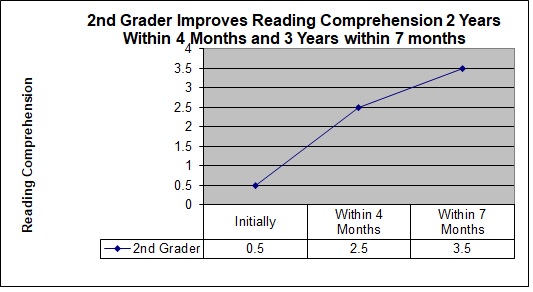
We have helped a second grader to improve her reading comprehension 3 grade levels in 7 months
and a 9th grader to improve her reding comprehension 4 grade levels in 6 months.
A homeschool student had been through 2 years of dyslexia treatments, but her comprehension was still at the kindergarten level, even though she was in 2nd grade.
With our help, she was able to:
- Significantly improve her reading fluency
- Improve her reading comprehension by 2 grade levels in 4 months and by 3 grade levels in 7 months
- Significantly improve her attention, visual processing, and confidence
- Read 23-chapter books on her own, after not having read one previously
- Go from a struggling dancer to the top group, because of their improved neural timing, working memory and confidence
A 9th grader improved her reading comprehension by 4 grade levels in 6 months.
Her mother commented: “Her reading comprehension has increased four grade levels, and she has increased her rate of reading by 100 words per minute. Her ability to comprehend what she is reading has also improved and she doesn’t hate reading for the first time in her life”.
For voucher students, we are offering the assessment – tutoring session with a separate parent consult, if you purchase one hour from 3D Learner through the Florida Empowerment Scholarship or the Personalized Education Program. You can either:
-
Purchase an hour and call us at 561-361-7495 or
-
Call us at 561-361-7495 to discuss how to improve your child’s reading fluency and reading comprehension and more.
For non-voucher students, we are offering this $250 value for $124.

Many parents ask how to address ADHD and anxiety challenges without medication or with lower dosages. At 3D Learner we use the Interactive Metronome, Heart Math and the Safe and Sound Protocol, which together improve attention and reduce anxiety. Note, these tools have helped students with attention and anxiety challenges who do not have a formal diagnosis. We include them as an integral part of the 3D Learner Program ®, and we also offer them as a separate offering, where appropriate.
Five key points about these interventions:
- These tools have many applications including:
- For a student in grades k to 3 who is really struggling with attention and anxiety
- For students in grade 4 and up, who struggle with attention, anxiety and may be impulsive. Students in grades 4 and up, often get into trouble due to impulse control, and the way we utilize these tools can help them to gain greater control of their emotions.
- For the student athlete – these tools can improve academic and athletic performance
- The integration of these different tools can lead to:
- Significant improvements in attention, motor planning, handwriting and self-control.
- Your child being much calmer and in control.
- Improved performance at school, in sports and at home. Parents have reported that homework time has decreased by over an hour a day.
- Students find these interventions to be fun and to yield significant benefits — in their schoolwork, in getting homework done much faster and in improving performance in sports, dance and other activities.
- These tools can be used to complement medication and counseling, or as a possible alternative to these options.
- We do these interventions differently than most. While these items can be purchased for home use, we have found the results can be transformational when done either in our office or via zoom.
The Interactive Metronome
The Interactive Metronome is a combination of a computer-generated sound and the student matching the beat, first with their hands, then with their toes, then with one hand and the other foot, and lastly with their hands for 10 minutes or longer.
One father who was coming down from New Jersey suggested he was going to do the Interactive Metronome with a provider close to his home, since this was a commodity and what 3D Learner offered was a proprietary system. We were interested to see the results. He did the program up north and reported absolutely no benefit from the training.
We asked him where his son started and finished. He said his son was off by 251 milliseconds to start and after 15 sessions he was down to 52 milliseconds off. We shared that all 452 students we had had at that time did far better than that.
The goal with the Interactive Metronome is to hit the hand or foot device at the same time as the beat. A score of zero would be perfect.
We tried playing ping pong with his son the first day and he could only hit the ball back 5 times before missing. We did 5 sessions of the Interactive Metronome with him, the 3D Learner way, and got his score down to 24 milliseconds off. When we played ping pong with him before lunch on the fifth day, he hit the ball back 137 times before his dad suggested they needed to leave for lunch. The dad commented that was amazing and was really interested to see if it would reduce his son’s homework time down from 2 and a half hours.
Two weeks later, the dad called and said his son was now getting his homework done in less than an hour and his dad asked him what happened. His son said, “it is easy to do my homework now that I can pay attention in class”.
The other benefits of the Interactive Metronome include improved motor planning, handwriting and math and reading fluency. It also helps improve attention at night, when medication historically wore off.
Heart Math and the Safe and Sound Protocol
Anxiety is a big issue for many of our students. When we even mention testing, we have seen students’ heart rate go from 95 to over 140. Heart Math is an excellent tool that calms the student proactively, can be used to reduce stress during stressful moments and can be used to help students to go to sleep. It provides the student with instant feedback on whether their hearts and minds are in sync. It has also been shown to significantly improve test scores.
The Safe and Sound Protocol is a research based filtered music program that calms the Vagus Nerve. We have had students who did the Interactive Metronome, Heart Math and the Safe and Sound Protocol where parents have said to us, “it is like having a different kid” Mr. V, Plantation.
These services can be done at our Coral Springs Facility or online.
For more information on how to address ADHD and anxiety with the Interactive Metronome, Heart Math and the Safe and Sound Protocol, give us a call at 561-361-7495.

The neurodivergent, right brain or kinesthetic learner in 4th, 5th and 6th grades missed critical time in school during the pandemic. They often struggle with reading fluency, reading comprehension, math word problems, processing issues and may struggle with anxiety and frustration.
This blog post focuses on the significant risks and opportunities for smart kids who learn differently, the key strengths and challenges of the neurodivergent, right brain or kinesthetic learner, examples of our successes and the pivotal role parents play.
If you would like to discuss how to help your child succeed, you can either
call us at 561-361-7495 or schedule a call at “Let’s Discuss How to Help Your Child Succeed”
9 key points we wish to stress are:
- Many smart struggling students are neurodivergent, right brain or kinesthetic learners. These are the kids who learn best when they see and experience information. They are often a lot smarter than present results would indicate. They often have a sea of strengths and challenges. Most school based and outside interventions fail to recognize and capitalize on these strengths and the need to engage the student in the learning process. You can access our no cost screening tool at
Is My Child a Neurodivergent, Right Brain or Kinesthetic Learner?
- There is a significant risk that things will get worse.
- These students can do far better with an integrated, engaging and effective system that significantly improves reading fluency, reading comprehension, math skills, attention, executive function skills, and confidence, while reducing anxiety. We have found it important to:
- Tailor solutions to meet the student’s needs
- Leverage their strengths and engage them in the learning process
- Identify and addresses their challenges
- Lower their anxiety and boost their self-esteem
- Helps parents to secure the help the schools can provide
- Helps the parents to be more effective coaches and advocates for their child
- Psycho-educational testing by itself is valuable, but the benefits are much greater when it leads to a transformational program that allows your child to make significant progress.
- For those students with dyslexia, a dyslexia treatment is often recommended. The Science of Reading, that focuses on improving reading fluency, may be an integral part of the solution, but most of these programs are not designed to improve:
- Vocabulary and reading comprehension
- Math and writing skills
- Attention, working memory and processing speed — executive function skills
- Your parenting skills
At 3D Learner, we address dyslexia and reading fluency issues with the UFLI Program ®, a dyslexia intervention developed by the University of Florida Learning Institute. It is an excellent option, that allows us to tailor a solution to meet your child’s specific needs.
- For those students with ADHD, Attention Deficit Disorder, ADHD medication is often recommended. We use the Interactive Metronome ® to improve attention. This can either be used to complement medication or as a stand alone offering. Our students have done very well with the Interactive Metronome, that has several unique benefits:
- It builds neural connections in the brain, that are still there years later.
- It works all day, so you do not have the problem of your child having difficulty paying attention when doing homework, because the medication has worn off.
- It also improves handwriting, reading and math fluency, sports skills and impulse control.
Note, the Interactive Metronome produces very different results, depending on the provider. We have used it for over 24 years with excellent results.
- If your child is a neurodivergent, right brain or kinesthetic learner, it is up to you to find the solution that can help your child be all they can be.
- 3D Learner has helped thousands of neurodivergent, right brain and kinesthetic learners to make significant gains in months.
If you would like to discuss how to help your child succeed, you can either
call us at 561-361-7495 or schedule a call at “Let’s Discuss How to Help Your Child Succeed”
One mom commented, “How is it you know my child better after less than 10 minutes than people who have taught him for years?. Our response, “That is our focus, helping kids who learn differently succeed.”
Her son gained 3 years in his reading comprehension is less than a year. His teacher said, “Tyler made more progress in a year than any child I have had in 27 years of teaching”.
Specific challenges may include some of the following
- Reading fluency and reading comprehension. Reading comprehension gaps often widen and start to impact math, social studies and science,
- Writing. Handwriting may be an issue, but putting their thoughts on paper is almost always an issue
- Math. Some are good at arithmetic, but math word problems are often a nightmare
- Processing skills. They often have an excellent memory for what they have seen and experienced, but have great difficulty remembering what they heard or read
- Attention. They can often hyper-focus on video games or something they like, but they often have great difficulty paying attention to that which is boring or frustrating
- Visual processing. The neurodivergent, right brain or kinesthetic learner often has good peripheral vision, that is seeing the world around them. Their challenges often include skipping words and lines when reading, missing signs when doing math problems and with handwriting and misaligning their math work, that results in mistakes
- Anxiety, frustration and lack of confidence. These have always been a problem for many kids, but these issues are more common and more significant with this group in this post pandemic era.
- In some cases, being rebellious. These students often are in fight or flight mode and sometimes the relationship with their parents are really strained.
There is a risk that academic, frustration and anxiety issues will worsen, as the work gets harder and hormones kick in.
As parents, there are several key points to recognize:
- School programs and accommodations can help, but they rarely help a neurodivergent, right brain or kinesthetic learner come near their potential
- If your child learns differently, they may have the potential to do far better within months
- If you would like to discuss how to help your child succeed, you can either
call us at 561-361-7495 or schedule a call at “Let’s Discuss How to Help Your Child Succeed”
The Rebellious Baseball Player who was a Neurodivergent Learner
Alan seemed like a normal kid, until you realize that he had been suspended twice by his school. His parents complained that he did not read much, he was at times confrontational and even though he liked baseball and was good at it, he often had games where he was off.
They were also upset that despite an above average IQ, he was now in classes with a lot of kids who were struggling academically and were not a good influence on Alan. A therapist referred the parents to 3D Learner.
The parents were aware of the emotional control issues. They were not aware of how far behind their son was, that it could get worse and that there was a significant opportunity for growth.
Alan was not interested in school, but his ears perked up when we told him we could improve his baseball skills. His assessment showed:
- His reading comprehension was four years below grade level
- He had difficulty paying attention, but the real issue was his impulsive behavior. When he tried to match a beat and he was off, he got frustrated and at times angry. He shared that this anger and impulsivity happened in a number of settings – including the two where he was suspended
- He skipped words and lines when reading and read very slowly
- He learned best when he saw and experienced information
The goals we all agreed to where to:
- Improve his reading comprehension 3 grade levels in 6 months
- Behave well in school, even when he was frustrated
- Get out of remedial reading for 7th grade and to be in classes with his friends
- Increase his reading speed from 110 to 200 words per minute
- Increase his batting average from 263 to 350
- Increase the number of home runs from 1 to 5
- Work respectfully with his parents and to have a nonverbal cue, when he felt himself losing it
The actual results were:
- He improved his reading comprehension 4 grade levels in 4 months
- His behavior was far better at home and in school
- He improved his reading speed to 206 words per minute
- He did get into regular English classes and got a B in English
- His batting average improved from 263 to 403, which was the highest on his team
- He hit 10 home runs that spring and it led the league
A few of the keys to his success:
- His parents saw the potential, were committed to his success and really liked that we could improve his academic, his behavior and his baseball skills. We are always looking for a hook to engage students.
- We taught him how to pause when he was frustrated
- Our hands-on program engaged him and he learned how to visualize what he read
- We improved his attention using the Interactive Metronome ® and showed him how to stay calm, even when he made mistakes
- We improved his visual tracking
- He saw changes within weeks in his reading, his behavior and his baseball performance
The More Typical Neurodivergent, Right Brain or Kinesthetic Learner
Ben could put together Legos for hours, had an incredible visual memory, but in 5th grade, his comprehension was two years below grade level, he often lost focus and he avoided reading. Note, if you only read at 110 words per minute, you might avoid reading too. Ben also suffered from anxiety challenges.
His parents saw an article with this graph that showed that secondary school students with learning disabilities often fall 3 to 4.9 years below grade level and some fall even further behind.
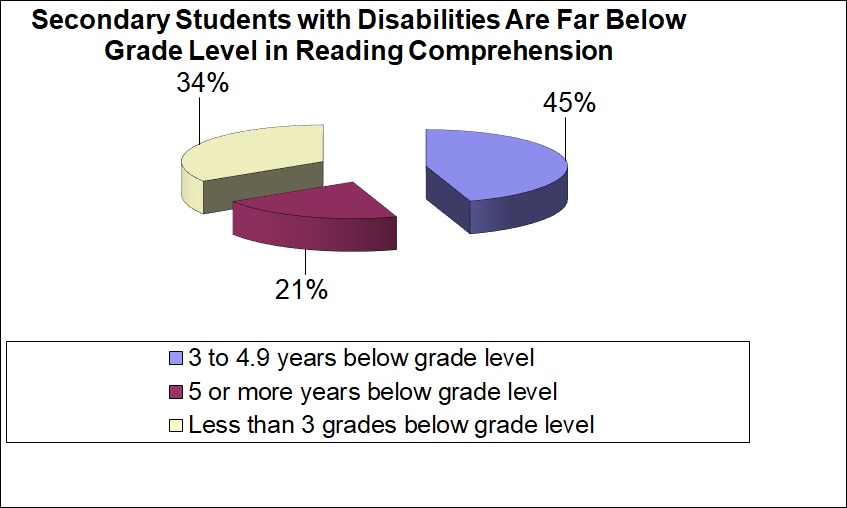
We assessed Ben and it confirmed:
- A significant anxiety challenge — his heart rate jumped to 142 beats per minute when we just mentioned taking an English Language Assessment
- He did lose focus
- His reading comprehension was two years below grade level
- He clearly learned differently and was a neurodivergent learner and very creative.
- He was motivated to succeed
The goals we set were to:
- Improve his comprehension 3 grade levels in 6 months
- Decrease the time it took to get homework time from 2.5 to 1.5 hours
- Have him stay calm
The results with Ben were good:
He improved his reading comprehension 3 grade levels in 4 months.
- He decreased his homework time to 1.25 hours
- He was much calmer
Even better, Ben wound up reading 4 long books over the next 3 months and went on to win an award as the best reader in his middle school.
Smart Neurodivergent Students
Alexa’s mom was really frustrated. Alexa had a 118 IQ, well above average. Alexa’s reading was at the 48th percentile and she was very shy and afraid to ask questions.
Mom had asked the principal what she could do, and the principal suggested there was no need to do anything, he then added, “Someone has to be average”.
Mom became a Mom on a Mission.
She heard us speak on GOLD Students — Gifted Operating with a Learning Difference. We focus on the student’s gifts and when we do, many neurodivergent, right brain and kinesthetic learners do far better.
Our assessment confirmed that Alexa both learned differently and was on grade level for reading comprehension. It also showed she lost focus and skipped words and lines when reading.
The goals were to:
- Significantly improve her attention and visual processing
- Get Alexa to ask 3 questions a day the first month, 4 a day the second month and 5 a day the third month
- To improve her performance on the SAT from the 48th to the 85th percentile
The results were Alexa:
- Made significant improvements in her attention and visual processing
- Asked 4 questions a day the first month, 8 questions a day the second month and we stopped counting
- Improved her reading comprehension from the 48th to the 95th percentile
- Became an extrovert and was a leader in the band in high school
7 Important Things to Consider About a Neurodivergent, Right Brain or Kinesthetic Learner in this Post Pandemic Period
- Too often the neurodivergent, right brain or kinesthetic learner’s strengths and either not identified or the solutions do not capitalize on their strengths
- Capitalizing on their strengths is often a key to improving their attitude and lowering their anxiety
- The learning gaps are more significant than ever, the gaps often widen and schools rarely close the gap
- Reading fluency and reading comprehension may both often issues and you want to address
- Executive function challenges (i.e. attention, working memory and processing speed) need to be both identified and improved
- Visual processing is often an issue
- It takes informed, empowered and proactive parents to make the difference
If you would like to discuss how to help your child succeed, you can either
call us at 561-361-7495 or schedule a call at “Let’s Discuss How to Help Your Child Succeed”
Note, it is often up to parents to put their neurodivergent, right brain or kinesthetic learner on their Pathway from Stress to Outrageous Success


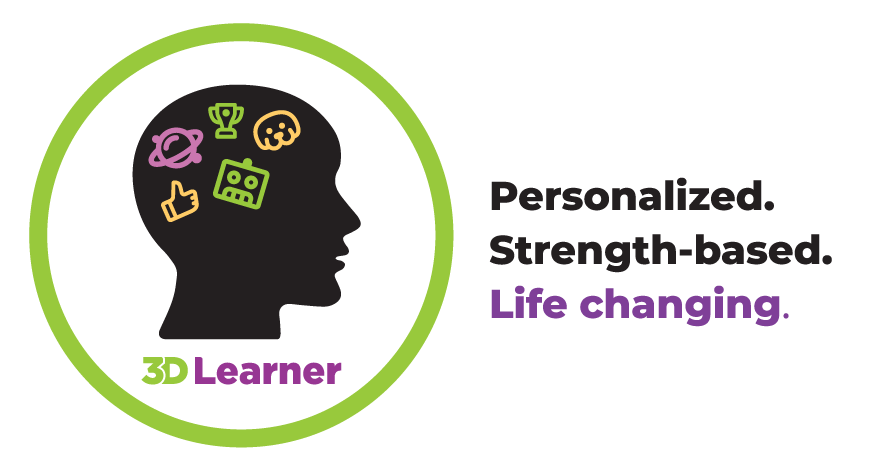
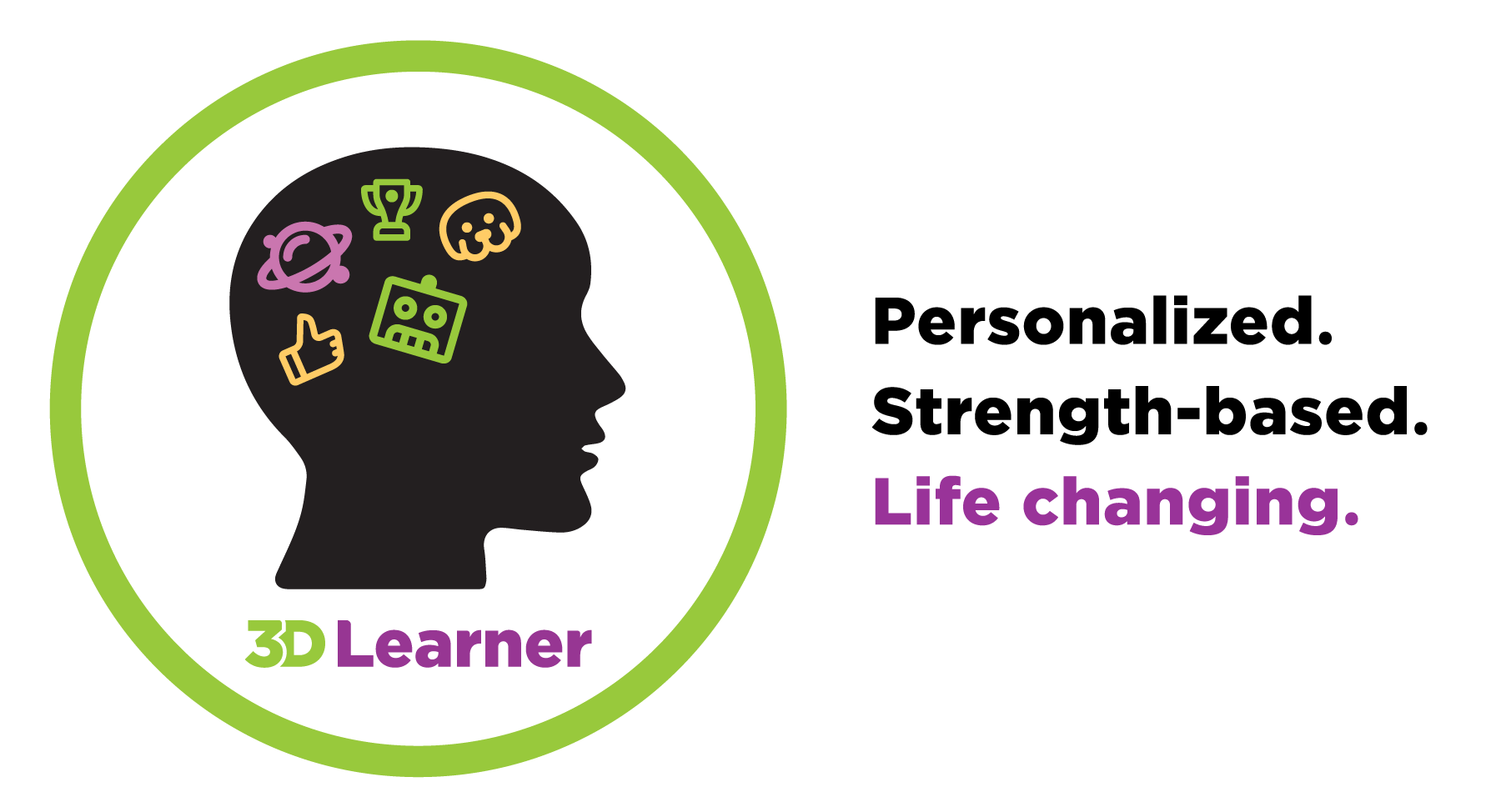






Recent Comments